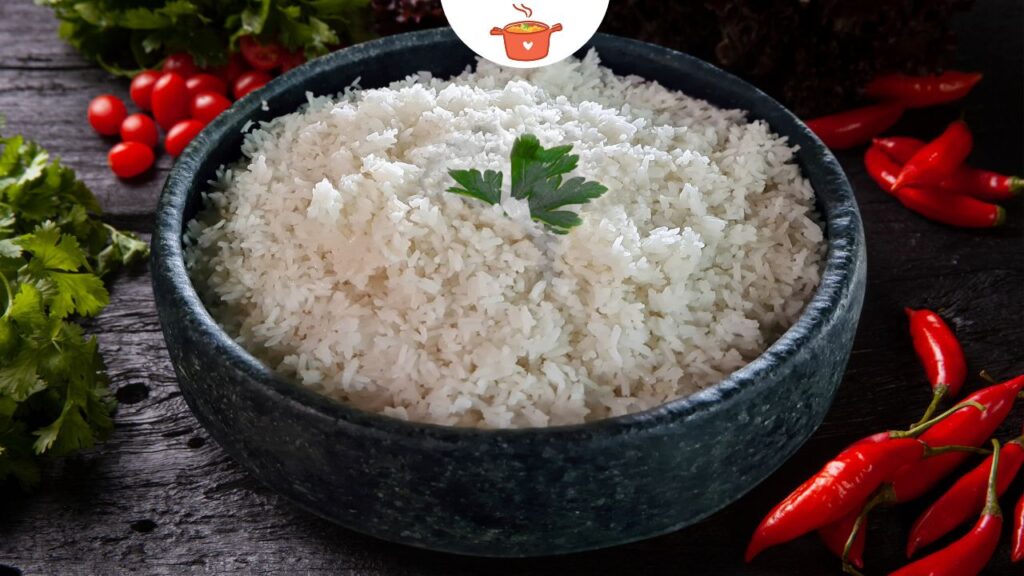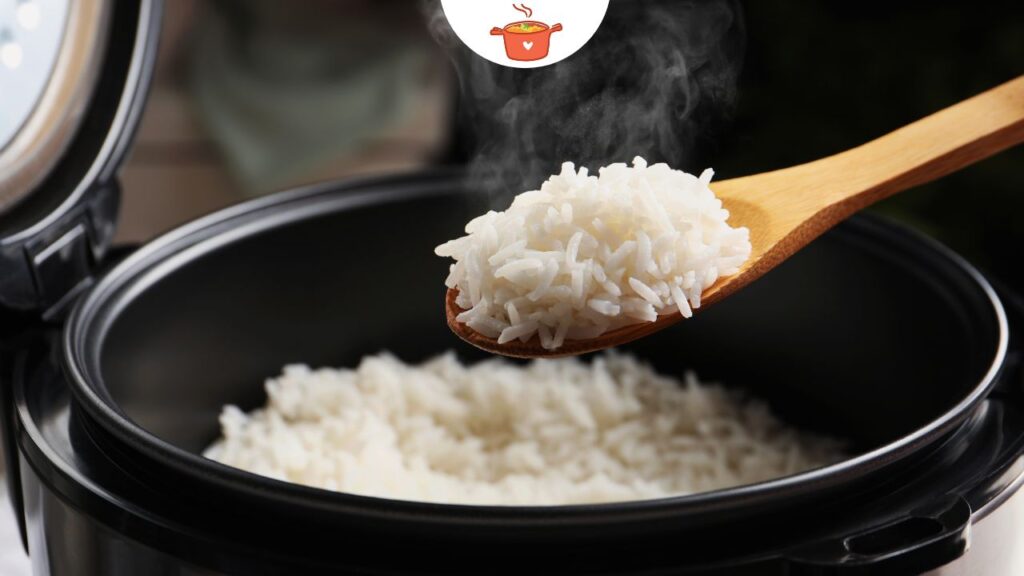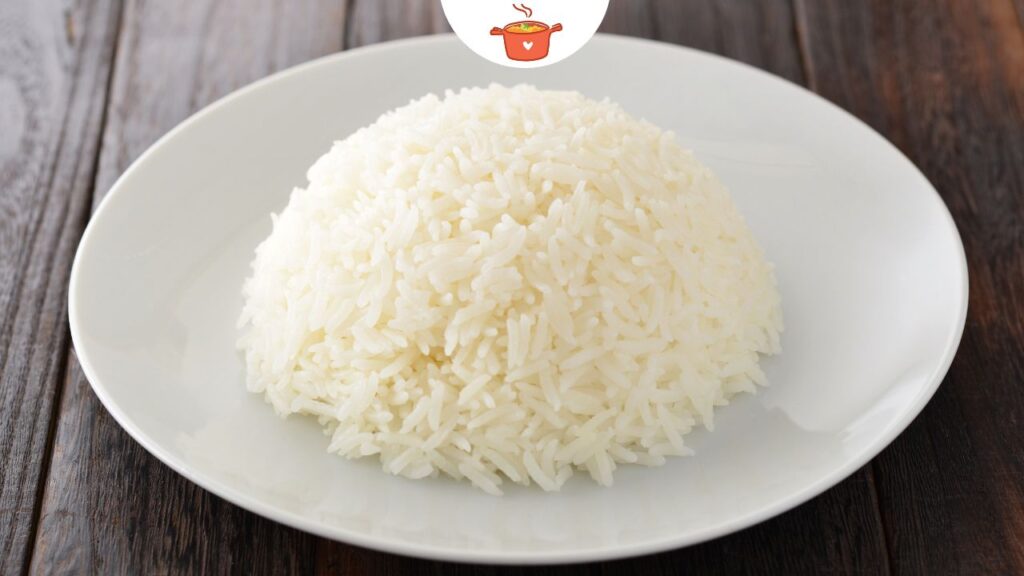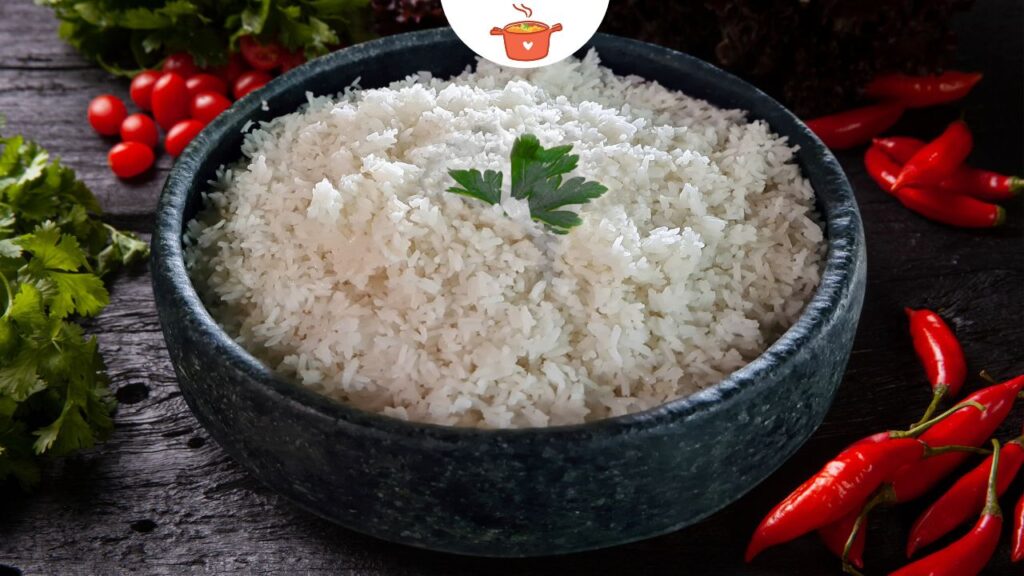
Ever wondered why your homemade rice doesn’t always turn out as fluffy and delicious as the kind you get in your favorite restaurants? It’s a common kitchen dilemma. We all love rice, its the perfect side dish. But mastering the art of cooking perfect, fluffy rice can feel like a culinary challenge. I mean, who hasn’t ended up with a pot of mushy or sticky rice at some point? But here’s the good news: achieving perfectly fluffy rice is easier than you might think! This article will guide you through every step, ensuring you get it right every time. This guide is your new best friend. You will learn how to cook perfect fluffy rice and you’ll be the master of this kitchen basic.
Contents
Choosing the Right Rice for Fluffy Results
Before we dive into the cooking methods, let’s talk about rice varieties. The type of rice you choose plays a significant role in the final texture.
Types of Rice and Their Texture:
- Long-grain rice (Basmati, Jasmine): These varieties are your best bet for fluffy rice. They have less starch, which means the grains remain separate and distinct after cooking. Basmati, with its nutty aroma, and Jasmine, with its fragrant floral notes, are both excellent choices. Personally, I’m a huge fan of Basmati for its versatility.
- Medium-grain rice: This type is a bit stickier than long-grain but can still be fluffy if cooked correctly. It’s a good all-purpose rice that works well in many dishes.
- Short-grain rice (Sushi rice): This is the stickiest of the bunch, designed to clump together. It’s perfect for sushi, but not what you want when aiming for fluffy rice.
Quality Matters
Just like any ingredient, the quality of your rice makes a difference. Opt for good-quality rice, and you’ll notice an improvement in both flavor and texture. While there’s debate on organic versus non-organic, choosing a reputable brand often yields better results. The best advice I can give is to experiment and find what suits you.
Essential Preparation Steps
Now that you’ve chosen your rice, let’s move on to the crucial prep work.
Rinsing the Rice
Why is rinsing so important? It’s all about removing excess starch. That surface starch is the main culprit behind sticky, gummy rice.
How to rinse properly:
- Place your rice in a fine-mesh sieve.
- Run cold water over the rice, gently swishing it with your hand.
- Continue rinsing until the water runs clear. This might take a few minutes, but it’s worth it!
Soaking Rice (Optional but Recommended)
Soaking is a step that many people skip, but trust me, it can make a real difference, especially for how to cook perfect fluffy rice consistently.
Benefits of soaking:
- Even cooking: Soaking ensures that each grain absorbs water evenly, leading to more consistent cooking.
- Fluffier texture: It helps to further reduce starch and promotes separation of grains.
- Reduced cooking time: Soaked rice generally cooks faster.
Soaking time: Aim for 30 minutes to an hour for optimal results. If you’re short on time, even 15 minutes can help. For brown rice, consider soaking for at least an hour due to its longer cooking time.
Cooking Methods for Perfectly Fluffy Rice
Alright, let’s get to the heart of the matter – cooking that rice! Here are four popular methods, each with its own advantages.
Stovetop Method
This is the classic, tried-and-true method that most of us are familiar with.
Choosing the Right Pot: A heavy-bottomed pot with a tight-fitting lid is essential. This ensures even heat distribution and prevents steam from escaping.
Rice to Water Ratio: This is where many people go wrong. The ideal ratio varies depending on the type of rice, but a good starting point is 1:1.5 or 1:2 (rice to water).
Here’s a table for quick reference:
| Rice Type | Water Ratio (Rice:Water) | Simmer Time (minutes) |
|---|---|---|
| Long-grain | 1:1.5 – 1:2 | 15-20 |
| Medium-grain | 1:1.5 | 15-20 |
| Brown Rice | 1:2 – 1:2.5 | 40-50 |
| Jasmine Rice | 1:1.5 | 12-15 |
| Basmati Rice | 1:1.75 | 15-18 |
Step-by-Step Cooking Process:
- Bring the water to a rolling boil in your chosen pot.
- Add the rinsed (and soaked, if applicable) rice to the boiling water. You can also add a pinch of salt and a little butter or oil if desired.
- Give it a single, gentle stir.
- Reduce the heat to the lowest possible setting.
- Cover the pot tightly with the lid. No peeking!
- Simmer for the recommended time based on your rice type (see table above).
- Once the time is up, turn off the heat and let the rice rest, still covered, for 10-15 minutes. This allows the rice to finish steaming and become even fluffier.
- Finally, fluff the rice with a fork before serving. This separates the grains and releases any trapped steam.

Rice Cooker Method
Rice cookers are a lifesaver for busy cooks. They take the guesswork out of cooking rice and deliver consistent results.
Advantages of using a rice cooker:
- Consistent results: Rice cookers are designed to cook rice perfectly every time.
- Hands-off cooking: Just add the rice and water, press the button, and walk away.
- “Keep warm” function: Most rice cookers automatically switch to a “warm” setting after cooking, keeping your rice at the perfect temperature without overcooking it.
Using the Rice Cooker:
- Add the rinsed (and soaked) rice to the rice cooker’s inner pot.
- Add water according to the manufacturer’s instructions. Most rice cookers have markings inside the pot to indicate the correct water level for different types of rice.
- Close the lid and press the “cook” button.
- Once the rice is cooked, the cooker will automatically switch to the “warm” setting. Let the rice rest for 10-15 minutes in this mode for optimal fluffiness.
- Fluff with the rice paddle that came with your cooker.
Absorption Method
This method is similar to the stovetop method but emphasizes precise water measurement to ensure all the water is absorbed by the rice. This is how many professional chefs do it.
Method Steps:
- Use the correct rice-to-water ratio based on your rice type.
- Follow the stovetop method instructions, but pay extra attention to the simmering time.
- The goal is to have all the water absorbed by the time the rice is cooked through.
Pilaf Method
The pilaf method involves sautéing the rice in oil or butter before adding the liquid. This adds a wonderful nutty flavor and can also enhance fluffiness.
What is Pilaf: It’s a technique where the rice is first cooked in fat (usually butter or oil) to toast the grains before simmering in liquid.
Enhanced Flavor and Texture: Toasting adds depth of flavor and helps to create a more defined grain structure.
Steps:
- Heat oil or butter in a pot over medium heat.
- Add the rinsed rice and sauté for 2-3 minutes, stirring frequently, until the grains are lightly toasted and fragrant.
- Proceed with the stovetop or absorption method, adding the liquid and simmering until cooked.
Troubleshooting Common Rice Cooking Problems
Even with the best instructions, things can sometimes go wrong. Here’s how to fix some common rice mishaps:
Mushy Rice
- Too much water: You probably used too much water. Next time, reduce the water slightly.
- Overcooking: You might have cooked it for too long. Check the rice a few minutes before the recommended time.
- Not letting it rest: Resting is crucial for allowing the rice to finish steaming and absorb any remaining moisture.
Sticky Rice
- Insufficient rinsing: Rinsing is key to removing excess starch. Make sure to rinse until the water runs clear.
- Wrong type of rice: Short-grain rice is naturally sticky. If you want fluffy rice, choose long-grain varieties.
- Too much water: Even with long-grain rice, too much water can lead to stickiness.
Burnt Rice
- Heat too high: You likely had the heat too high, especially during the simmering phase. Keep it on the lowest setting.
- Pot too thin: Thin-bottomed pots can cause uneven heating and burning. Invest in a good quality, heavy-bottomed pot.
- Not enough water: If there’s not enough water, the rice can burn before it’s fully cooked.
Unevenly Cooked Rice
- Uneven heat distribution: This can happen if your stovetop burner is uneven or if your pot doesn’t distribute heat well.
- Not soaking long enough: Especially true for brown rice, which needs ample soaking time for even cooking.

Flavoring and Serving Your Fluffy Rice
Now that you’ve mastered the basics, let’s talk about taking your rice to the next level!
Adding Flavor During Cooking
- Salt: A pinch of salt enhances the natural flavor of the rice.
- Herbs and spices: Bay leaves, cardamom pods, cloves, or a cinnamon stick can add subtle aromatic notes. Experiment to find your favorite combinations!
- Broths: Cooking rice in chicken or vegetable broth instead of water adds a depth of flavor.
- Coconut milk: For a richer, creamier texture and a hint of sweetness, try using coconut milk for part of the cooking liquid.
Serving Suggestions
Fluffy rice is incredibly versatile. Here are a few ideas:
- As a side dish: It pairs well with curries, stews, stir-fries, grilled meats, and roasted vegetables.
- Incorporating into other dishes: Use it as a base for fried rice, rice bowls, salads, or even burritos.
- Garnish: Sprinkle with chopped fresh herbs (parsley, cilantro, chives), toasted nuts, or seeds for added flavor and visual appeal.
Storing and Reheating Leftover Rice
Cooked rice can be stored and reheated, but it’s important to do it safely to prevent foodborne illness.
Proper Storage
- Cool down quickly: Don’t leave cooked rice at room temperature for more than two hours.
- Refrigerate: Store leftover rice in an airtight container in the refrigerator.
- Consume within 3-4 days: For best quality and safety, eat leftover rice within 3-4 days.
Reheating Methods
- Stovetop: Add a tablespoon or two of water to the rice, cover the pot, and heat over low heat, stirring occasionally, until heated through.
- Microwave: Place the rice in a microwave-safe dish, add a splash of water, cover, and microwave in short bursts (30-60 seconds), stirring in between, until heated through.
- Steaming: For the fluffiest reheated rice, use a steamer basket. This method helps to revive the texture without making it mushy.
Here is a table summarizing reheating methods:
| Method | Pros | Cons |
|---|---|---|
| Stovetop | Even heating, good for larger quantities | Can be slow, requires monitoring |
| Microwave | Quick and convenient | Can dry out rice if not done carefully |
| Steaming | Best for fluffiness, gentle reheating | Requires a steamer basket, can be slower |
Safety
- Avoid reheating rice multiple times: Each time rice is reheated, the risk of bacterial growth increases. It’s best to reheat only the portion you plan to eat.
FAQs
Q: Can I use a regular pot instead of a rice cooker? A: Absolutely! While a rice cooker offers convenience, you can achieve perfectly fluffy rice on the stovetop using the methods described in this guide.
Q: How do I fix mushy rice? A: Unfortunately, there’s no way to completely salvage mushy rice. However, you can try spreading it out on a baking sheet and baking it at a low temperature for a few minutes to dry it out slightly. You can then use it in dishes like fried rice or rice pudding where the texture is less critical.
Q: How long does it take to cook fluffy rice? A: The cooking time varies depending on the type of rice and the method used. Generally, long-grain white rice takes about 15-20 minutes to simmer on the stovetop, while brown rice can take 40-50 minutes.
Q: What kind of rice is the fluffiest? A: Long-grain rice varieties like Basmati and Jasmine are known for their fluffy texture when cooked properly.
Q: Why does my rice burn on the bottom? A: This usually happens if the heat is too high or if you’re using a thin-bottomed pot. Make sure to reduce the heat to the lowest setting after the water comes to a boil, and use a heavy-bottomed pot for even heat distribution.
Conclusion
There you have it – your comprehensive guide on how to cook perfect fluffy rice! I hope this article has demystified the process and given you the confidence to cook rice like a pro. Remember, practice makes perfect. Don’t be discouraged if your first few attempts aren’t flawless. Keep experimenting with different rice types, ratios, and methods until you find what works best for you. Cooking should be enjoyable, so have fun with it and share your newfound rice mastery with friends and family! They’ll be begging for your secret. And remember, the most important ingredient is always a dash of love (and maybe a pinch of salt!).

